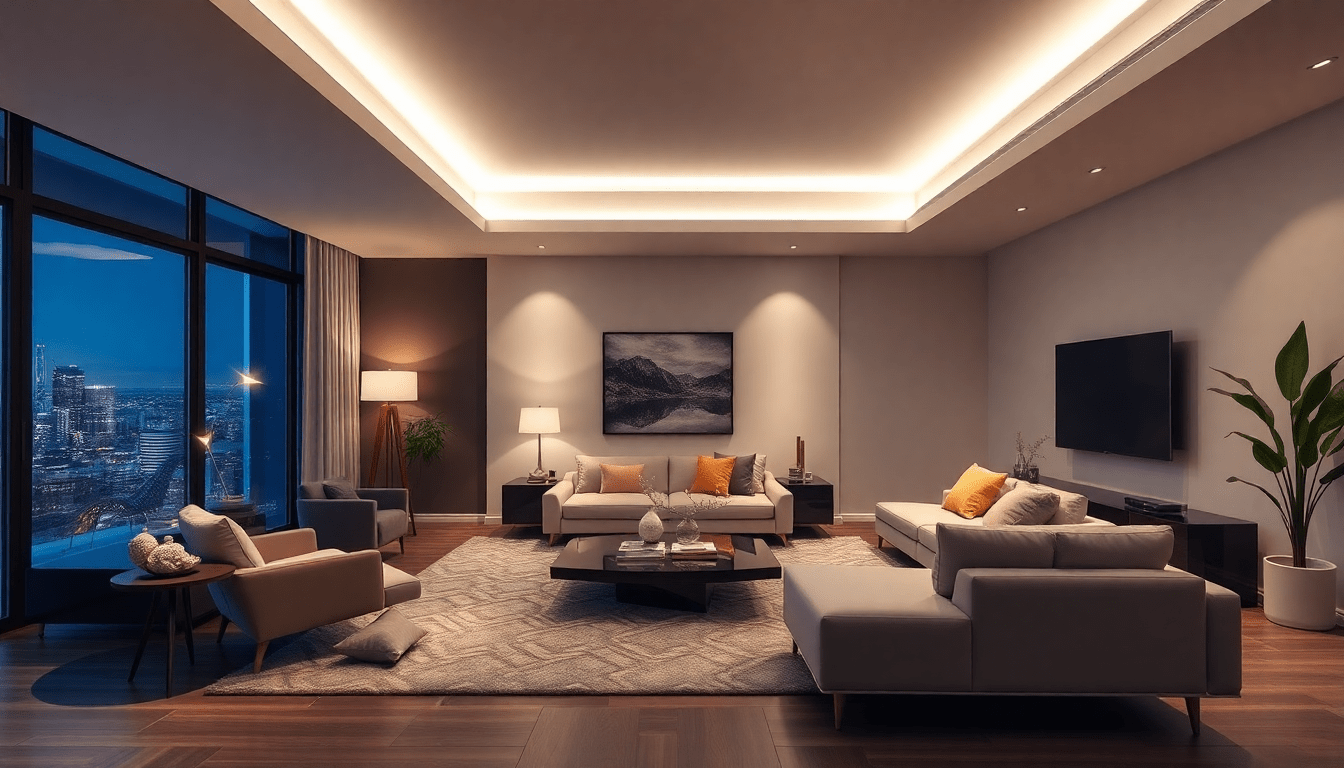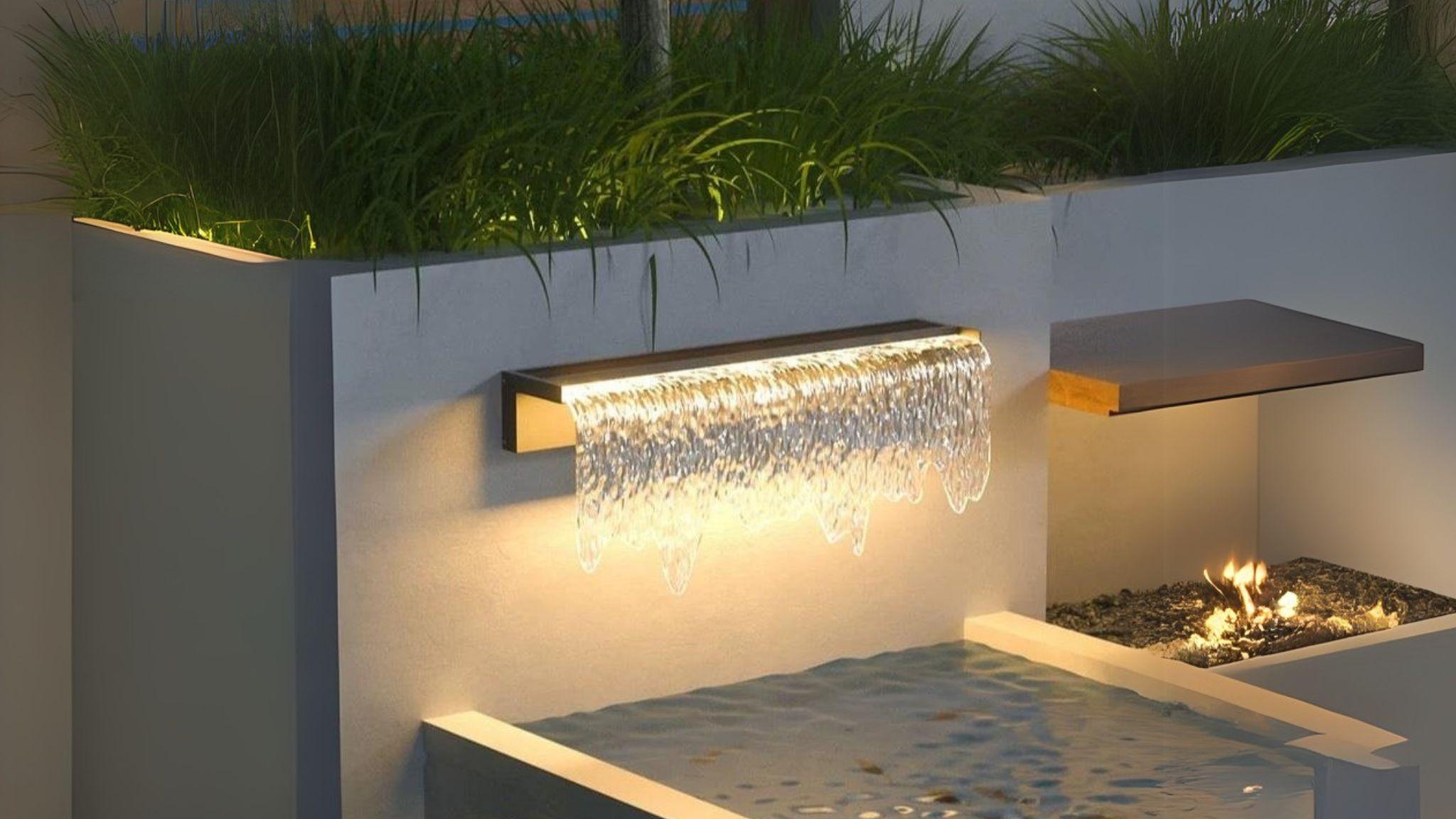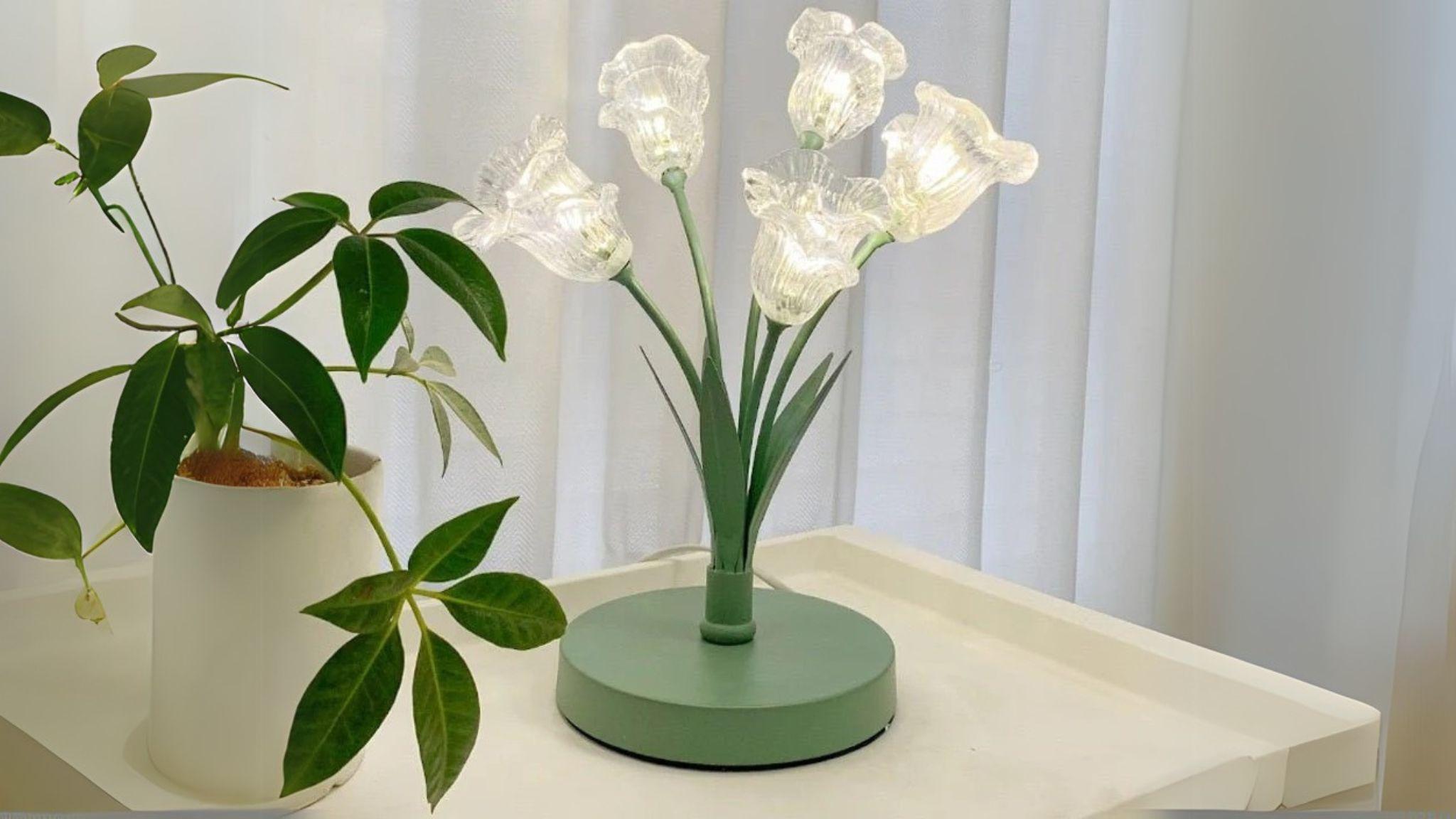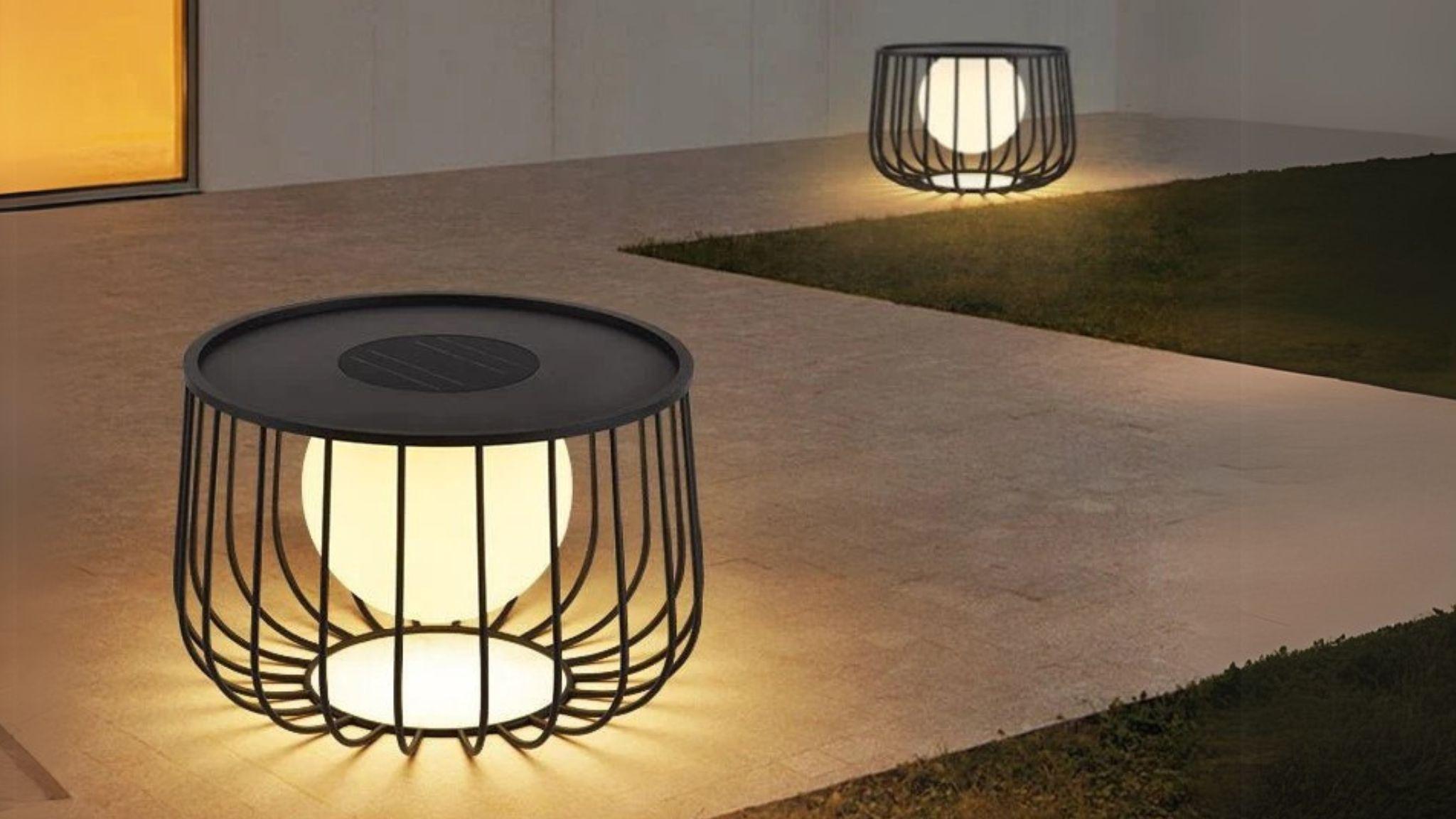Introduction: Elevate Your Modern Home with Ambient Lighting and Smart Furniture
In 2025, the modern home is no longer just a place to live—it's an experience to be curated. The synergy between ambient lighting and smart furniture creates an environment that is simultaneously functional, stylish, and responsive to your daily needs. This comprehensive guide delves deeply into mastering ambient lighting and smart furniture, revealing innovative design strategies that will help you craft a seamless modern home experience. Whether you're redesigning a single room or your entire living space, these insights will empower you to make smart, aesthetic choices that enhance comfort, efficiency, and ambiance.
The Power of Ambient Lighting in Modern Interior Design
Ambient lighting is the cornerstone of effective interior illumination. It provides the overall, diffused light that fills a room and creates an inviting atmosphere. Unlike direct task lighting or dramatic accent lighting that highlight specific areas, ambient light gently bathes your space in warmth and balance.
Key Benefits of Ambient Lighting
- Sets the mood: Ambient lighting creates an emotional backdrop, from cozy and intimate to bright and energizing.
- Enhances spatial perception: Proper ambient light can make rooms appear larger, more open, and inviting.
- Reduces glare and shadows: A well-designed ambient lighting scheme eliminates harsh contrasts, reducing eye strain.
- Supports other lighting layers: It forms the foundation upon which accent and task lighting build functionality and style.
Innovative Ambient Lighting Techniques to Transform Your Home
To truly master ambient lighting, it’s important to explore innovative methods that go beyond traditional ceiling fixtures. Here are some top strategies:
1. Layered Lighting for Depth and Flexibility
Layering involves combining ambient, task, and accent lighting to create a dynamic environment. For example, an overhead chandelier provides ambient light, while a reading lamp offers task lighting, and LED strips under shelves deliver accent illumination.
2. Smart LED Technology
Smart LEDs enable customization of color temperature, brightness, and even color hues, all controllable through apps or voice assistants. This technology allows you to adapt lighting to different times of day and moods effortlessly.
3. Indirect Lighting for Soft Ambiance
Using cove lighting, wall washers, or backlit panels hides the light source, producing a soft glow that enhances architectural features without overwhelming the senses.
4. Natural Light Enhancement
Integrating natural light through strategically placed mirrors, light-colored walls, and sheer curtains maximizes daylight, reducing energy use and connecting you to the outdoors.
Understanding Smart Furniture: Functionality Meets Technology
Smart furniture is revolutionizing the way we interact with our living spaces by infusing technology into everyday pieces. This evolution addresses the need for versatility, connectivity, and space efficiency in modern homes.
Core Attributes of Smart Furniture
- Multifunctionality: Pieces like sofa beds, modular shelving, and extendable tables adapt to multiple uses.
- Integrated Technology: Embedded USB charging ports, wireless charging pads, Bluetooth speakers, and touch controls facilitate modern living.
- Space Optimization: Compact designs with clever storage solutions help small spaces feel larger and more organized.
- Adaptive Comfort: Adjustable furniture with motorized recliners and height settings enhances ergonomics and user experience.
Examples of Smart Furniture Transforming Modern Homes
- Convertible Tables: Coffee tables that extend into dining tables with built-in lighting and charging stations.
- Smart Sofas: Sofas with integrated speakers, USB ports, and hidden storage compartments.
- Desk Systems: Height-adjustable desks with embedded LED task lighting and cable management.
- Storage Ottomans: Stylish ottomans with internal compartments and built-in Bluetooth speakers.
Integrating Ambient Lighting with Smart Furniture for a Cohesive Design
To achieve a truly harmonious living space, it’s essential to consider how ambient lighting and smart furniture interact and complement each other. Here are some detailed strategies to ensure cohesion:
Color Temperature Coordination
Maintain consistency by matching the color temperature of your furniture’s built-in lighting with the room’s ambient lighting. For instance, warm white LEDs (2700K-3000K) create a cozy atmosphere, while cooler white tones (4000K-5000K) promote focus and energy.
Furniture as Lighting Anchors
Position smart furniture pieces with integrated lights near walls or architectural features to highlight textures and colors. For example, a smart bookshelf with embedded LEDs can illuminate decorative items and create visual interest.
Minimalist Aesthetic with Maximum Impact
Opt for furniture with sleek lines and subtle lighting to avoid cluttering the visual field. Minimalist designs allow ambient lighting to shine as a design element without competing for attention.
Unified Control Systems
Utilize smart home hubs or apps that control both lighting and furniture features. This integration provides seamless adjustments, such as dimming lights when reclining your smart sofa or activating reading lights on your adjustable desk.
Seasonal and Trend-Forward Design Ideas for 2025
Incorporate the latest trends to keep your modern home fresh and inspiring throughout the year:
Embrace Warmth and Natural Materials
In 2025, the trend is shifting towards warmer lighting tones paired with organic materials like reclaimed wood, rattan, and natural fibers. These elements create inviting spaces that balance modern technology with nature’s comfort.
Biophilic Design Integration
Smart furniture designed to support indoor plants and natural elements—such as planters built into tables or shelves—combined with adjustable ambient lighting that mimics natural sunlight, promote wellness and connection to nature.
Multifunctional Smart Hubs
Furniture that acts as a central command station for your smart home, offering control over lighting, temperature, and entertainment systems, is becoming increasingly popular.
Sustainable and Eco-Friendly Choices
Energy-efficient smart lighting and furniture made from recycled or sustainably sourced materials are a must-have for eco-conscious homeowners.
Step-by-Step Guide to Implementing Ambient Lighting and Smart Furniture in Your Home
Step 1: Assess Your Space and Needs
Consider the size, natural light availability, and primary functions of each room. Determine which areas would benefit most from ambient lighting and smart furniture.
Step 2: Develop a Lighting Plan
- Identify zones for ambient, task, and accent lighting.
- Choose fixtures and smart bulbs that offer dimming, color temperature, and scene-setting capabilities.
- Plan for indirect and layered lighting techniques.
Step 3: Select Smart Furniture Pieces
- Prioritize multifunctional items that maximize space and offer tech integration aligned with your lifestyle.
- Consider furniture scale, style, and compatibility with your lighting design.
Step 4: Integrate and Automate
- Install unified control systems like smart hubs or apps to synchronize lighting and furniture features.
- Program scenes for daily routines (e.g., morning energizing light with a desk setup, evening relaxation with sofa lighting).
Step 5: Fine-Tune and Personalize
- Experiment with brightness levels and color hues to find what feels best.
- Incorporate seasonal adjustments to maintain comfort and style year-round.
Common Mistakes to Avoid When Designing with Ambient Lighting and Smart Furniture
- Over-illumination: Too much light can create discomfort and negate the benefits of ambient lighting.
- Ignoring compatibility: Mismatched color temperatures or poorly integrated smart devices can disrupt the harmony of your design.
- Neglecting user experience: Complex controls or inconvenient furniture placement can reduce functionality.
- Forgetting scalability: Choose systems and furniture that can adapt as your needs or technology evolve.
Conclusion: Craft a Seamless Modern Home with Ambient Lighting and Smart Furniture
The intersection of ambient lighting and smart furniture presents a unique opportunity to redefine how we live and experience our homes. By thoughtfully combining these elements, you can create a personalized sanctuary that adapts to your lifestyle, enhances your well-being, and reflects your design sensibilities.
Start your journey towards a seamless modern home today and embrace the future of interior design with confidence.
Visit XENTAR for more lighting, decor & furniture curated for modern homes and creative spaces.




Share:
Smart Lighting and Multifunctional Furniture: Crafting Personalized and Adaptive Living Spaces for Modern Homes
Innovative Layered Lighting Techniques to Complement Multifunctional Furniture for Stylish and Practical Home Interiors